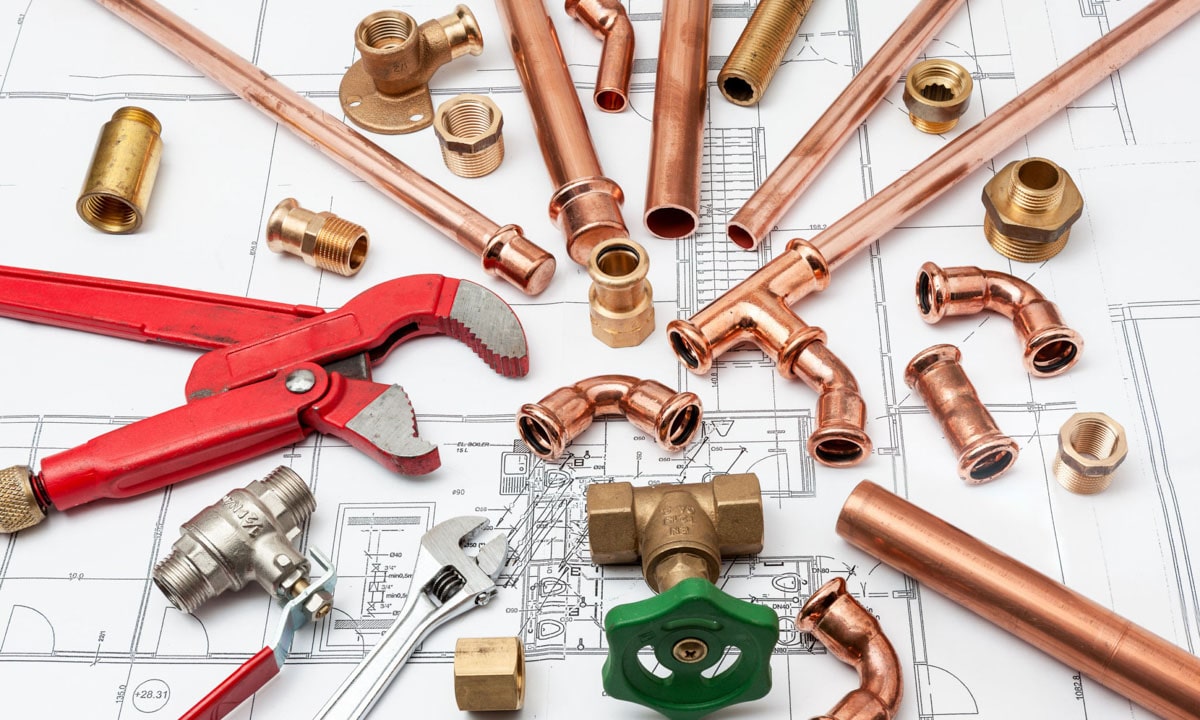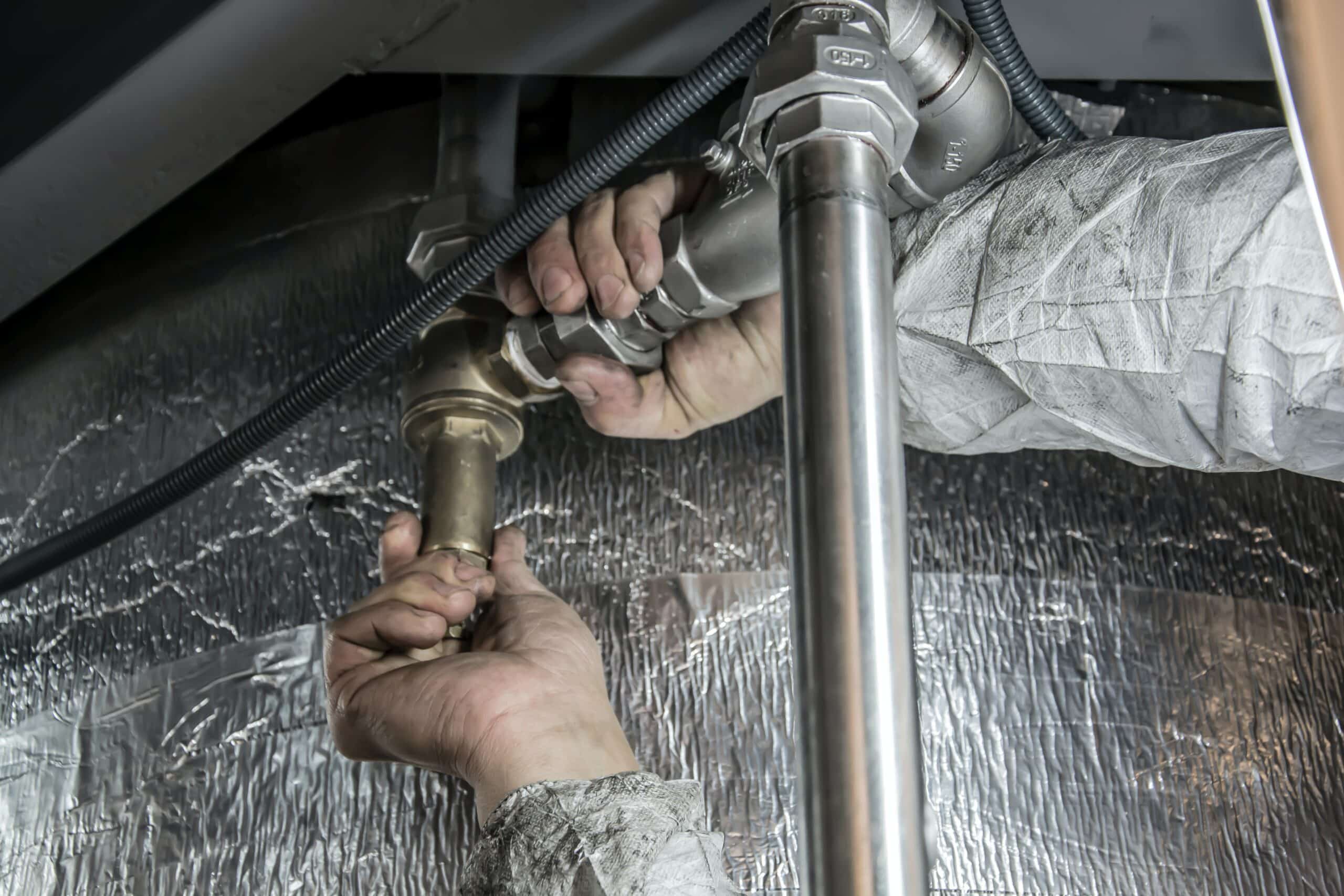Were you interested in advise concerning 7 Plumbing Industry Trends You Need To Know?

Intro
The pipes industry is going through a transformative stage driven by technical advancements and expanding problems for sustainability and efficiency. This write-up checks out arising patterns and advancements shaping the future of plumbing.
Smart Plumbing Equipments
Including wise innovation right into plumbing systems allows remote surveillance, leak detection, and automated maintenance. Smart sensing units and IoT (Net of Points) tools permit property owners and plumbers to monitor water usage and discover issues in real-time, causing much more efficient source administration and proactive upkeep.
Water Performance Solutions
With enhancing focus on water conservation, innovative services are being developed to minimize water wastage in plumbing systems. High-efficiency components, greywater recycling systems, and smart irrigation controllers are among the modern technologies assisting customers decrease their water footprint while keeping comfort and ease.
Lasting Materials
The change in the direction of sustainability extends to pipes materials, with a growing choice for environment-friendly choices. Eco-friendly piping materials, such as PEX (cross-linked polyethylene) and HDPE (high-density polyethylene), deal sturdiness and resistance to corrosion without compromising ecological integrity.
Anticipating Upkeep
Anticipating maintenance methods utilize data analytics and machine learning algorithms to expect and stop pipes concerns prior to they take place. By analyzing historic information and efficiency metrics, anticipating maintenance formulas can determine patterns and anomalies, enabling proactive interventions to avoid pricey repair work and interruptions.
Increased Fact in Pipes
Increased Truth (AR) innovation is changing pipes by giving technicians with real-time visual advice for fixing and repair work jobs. AR-enabled clever glasses or mobile applications overlay electronic info onto the physical setting, aiding plumbers picture pipe designs, determine surprise leaks, and carry out repairs with precision.
Influence of 3D Printing
The arrival of 3D printing has introduced brand-new opportunities in making plumbing components. From custom-designed components to complex pipeline fittings, 3D printing allows for rapid prototyping and on-demand manufacturing, minimizing lead times and making it possible for higher customization in pipes layout.
Health And Wellness Features
In reaction to heightened issues for health and safety, plumbing fixtures are integrating functions such as antimicrobial surface areas, touchless procedure, and self-cleaning systems. These innovations not only improve health yet additionally promote customer comfort and convenience.
Hygiene-focused Fixtures
Touchless taps, self-sanitizing commodes, and antimicrobial surfaces are coming to be progressively prevalent in household and commercial setups, decreasing the threat of bacterium transmission and advertising a cleaner, healthier atmosphere.
Water Quality Tracking
Developments in water top quality monitoring modern technologies make it possible for property owners to monitor the purity and safety of their water system in real-time. Smart water top quality sensors can detect contaminants, pH degrees, and temperature variants, encouraging customers to take positive actions to make certain water safety and security.
Remote Plumbing Solutions
Remote diagnostics and digital help are transforming the means plumbing solutions are provided. Through video conferencing and remote access technologies, plumbers can fix problems, give assistance for DIY repair services, and also do remote examinations, supplying better availability and ease to home owners.
Challenges and Opportunities
While pipes advancements hold tremendous pledge, they likewise existing challenges such as information personal privacy concerns, regulatory conformity, and the need for labor force training. Addressing these difficulties requires cooperation between market stakeholders and regulatory bodies to make sure safe and liable implementation of brand-new technologies.
Regulative Landscape
Governing structures play an essential duty fit the fostering of pipes developments, with standards and codes regulating whatever from water performance to item security. As innovations continue to develop, regulative bodies must adapt to guarantee consumer defense and ecological stewardship.
Future Expectation
The future of plumbing is characterized by proceeded development and combination with various other industries such as IoT, renewable resource, and structure automation. By embracing lasting practices, leveraging emerging innovations, and focusing on user-centric style, the plumbing sector is positioned to resolve the evolving demands of society while minimizing its ecological impact.
Verdict
In conclusion, the future of pipes is specified by a convergence of innovation, sustainability, and user-centric style. By accepting clever solutions, sustainable materials, and positive maintenance methods, the plumbing market can boost performance, promote security, and add to a more sustainable future.
The Future of Plumbing: Trends and Innovations to Watch
Introduction to Future Plumbing Trends
The future of plumbing is being shaped by several key factors, including technological advancements, environmental concerns, and changing consumer expectations. These factors are driving the development of new products, services, and practices that enhance the efficiency, sustainability, and convenience of plumbing systems.
Key Trends and Innovations in Plumbing
Smart Plumbing Systems: The integration of smart technology into plumbing systems is transforming the way we manage water usage and detect issues. Smart leak detectors, automated water shut-off valves, and smart faucets are just a few examples of how technology is enhancing plumbing systems. These devices provide real-time data and remote control capabilities, allowing homeowners to monitor and manage their water usage more effectively. Water Conservation and Efficiency: With increasing concerns about water scarcity, there is a growing emphasis on water conservation and efficiency. Innovations such as low-flow fixtures, greywater recycling systems, and rainwater harvesting are becoming more popular. Plumbers are adopting these technologies to help customers reduce their water consumption and save on utility bills. Sustainable Materials: The use of sustainable materials in plumbing systems is gaining traction. This includes the adoption of recyclable and biodegradable materials, as well as the use of non-toxic and eco-friendly products. Sustainable materials help reduce the environmental impact of plumbing systems and promote long-term sustainability. Energy-Efficient Water Heaters: Advances in water heating technology are leading to the development of more energy-efficient systems. Tankless water heaters, solar water heaters, and heat pump water heaters are becoming more prevalent. These systems offer significant energy savings and reduce the carbon footprint of homes and businesses. Trenchless Technology: Trenchless technology is revolutionizing the way plumbing repairs and installations are conducted. This method allows for the repair or replacement of pipes without extensive excavation, minimizing disruption and reducing costs. Techniques such as pipe bursting and cured-in-place pipe (CIPP) lining are gaining popularity. Health and Safety: The focus on health and safety is driving innovations in plumbing systems. Touchless faucets and fixtures, antimicrobial materials, and improved water filtration systems are being developed to enhance hygiene and protect public health. Plumbers are adopting these innovations to meet the growing demand for safer and healthier plumbing solutions. Remote Diagnostics and Monitoring: The ability to diagnose and monitor plumbing systems remotely is becoming increasingly important. Remote diagnostic tools and sensors allow plumbers to identify issues and perform maintenance without the need for on-site visits. This enhances efficiency and reduces the need for costly emergency repairs. Impact of Future Trends on the Plumbing Industry
Enhanced Efficiency: The adoption of smart technology and energy-efficient systems will enhance the efficiency of plumbing systems. This will lead to reduced water and energy consumption, lower utility bills, and improved performance. Sustainability: The focus on sustainability will drive the development and adoption of eco-friendly plumbing solutions. This will contribute to the conservation of natural resources, reduction of waste, and protection of the environment. Improved Customer Experience: The integration of technology and innovative solutions will improve the customer experience. Homeowners will have greater control over their plumbing systems, access to real-time data, and the ability to manage their water usage more effectively. Increased Demand for Skilled Plumbers: The adoption of new technologies and materials will require plumbers to acquire new skills and expertise. There will be an increased demand for skilled plumbers who are knowledgeable about the latest trends and innovations. Cost Savings: The use of efficient and sustainable plumbing solutions will result in cost savings for both homeowners and businesses. Reduced water and energy consumption, lower maintenance costs, and fewer emergency repairs will contribute to overall affordability. Preparing for the Future of Plumbing
Stay Informed: Keep up-to-date with the latest trends and innovations in the plumbing industry. Attend industry conferences, participate in training programs, and engage with manufacturers to stay informed. Invest in Training: Ensure that you and your team are trained in the latest technologies and installation techniques. This will enable you to offer cutting-edge solutions to your customers and stay competitive in the market. Promote Sustainable Solutions: Highlight the benefits of eco-friendly and energy-efficient plumbing solutions to your customers. Educate them about the advantages of adopting sustainable practices and products. Leverage Technology: Embrace smart technology and remote diagnostic tools to enhance your services. Offer remote monitoring and maintenance options to provide added convenience and value to your customers. Collaborate with Manufacturers: Partner with manufacturers of innovative plumbing products to gain access to the latest solutions and technical support. This can also provide opportunities for joint marketing efforts. Focus on Customer Education: Educate your customers about the benefits and functionality of new plumbing technologies. Provide guidance on how to use smart systems and maintain sustainable plumbing solutions. Conclusion
The future of plumbing is being shaped by exciting trends and innovations that promise to enhance efficiency, sustainability, and convenience. By staying informed and embracing these changes, plumbers can provide superior services to their customers and contribute to a more sustainable future. The adoption of smart technology, sustainable materials, and energy-efficient systems will drive the evolution of the plumbing industry, creating new opportunities and challenges. By preparing for the future, plumbers can ensure their success in a rapidly changing market.

I am very intrigued by Innovative Plumbing Trends Transforming Construction and I really hope you enjoyed my post. Are you aware of somebody else who is in to the niche? Why not share it. Thank you so much for going through it.
Book Services